Wild berries are a common treasure in the wilds of Colorado. Native Americans have been harvesting and consuming these wild edibles for centuries. Amidst the vibrant tapestry of flora and fauna, an array of wild tasty berries beckons adventurers to embark on a delicious and nutritious journey. If you’re going to seek out edible berries while enjoying Colorado’s breathtaking landscapes, you’ll want first to learn more about which are safe for human consumption and which you need to avoid.
It’s time to shed some light on essential aspects of berry foraging in the Centennial State. Let’s dive into learning more about wild berries in Colorado, when to look for them, where they tend to grow, and what dangers you might want to avoid.
The Best Time for Foraging Wild Berries
Naturally, every plant in Colorado will have its own timeline, so you’ll want to look closer at when it’s appropriate to search for wild strawberries versus wild plums.
As a general guideline, Colorado’s wild berry season typically spans from early summer to late summer, presenting a window of opportunity for foragers. During this time, various berry species reach their peak ripeness.
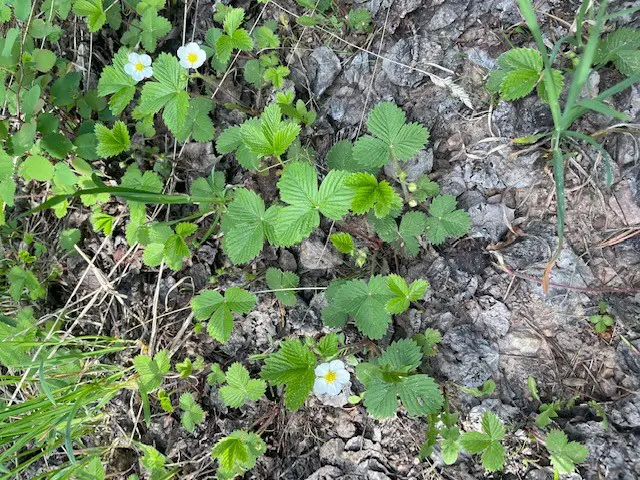
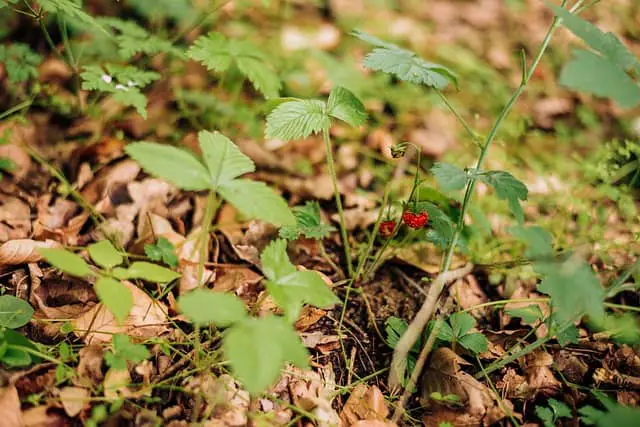
Wild Strawberry
These small red berries are members of the rose family. Among the most coveted berries, wild strawberries delight foragers with their intense sweetness and aromatic fragrance.
Don’t expect these to be the same as the fruits you find in the grocery store. The wild edibles come in a small size, much smaller than you’ve seen at the store. They make up for this by growing in abundance.
These wild plants like to grow in the Rocky Mountains in dry soil. These small treasures can also be found in open meadows, forests, and even alpine regions. You’ll often see them right off the side of a trail. They are happy in partial shade or full sun. They are drought tolerant.
You’ll want to look for wild strawberries in late spring and early summer in Colorado.
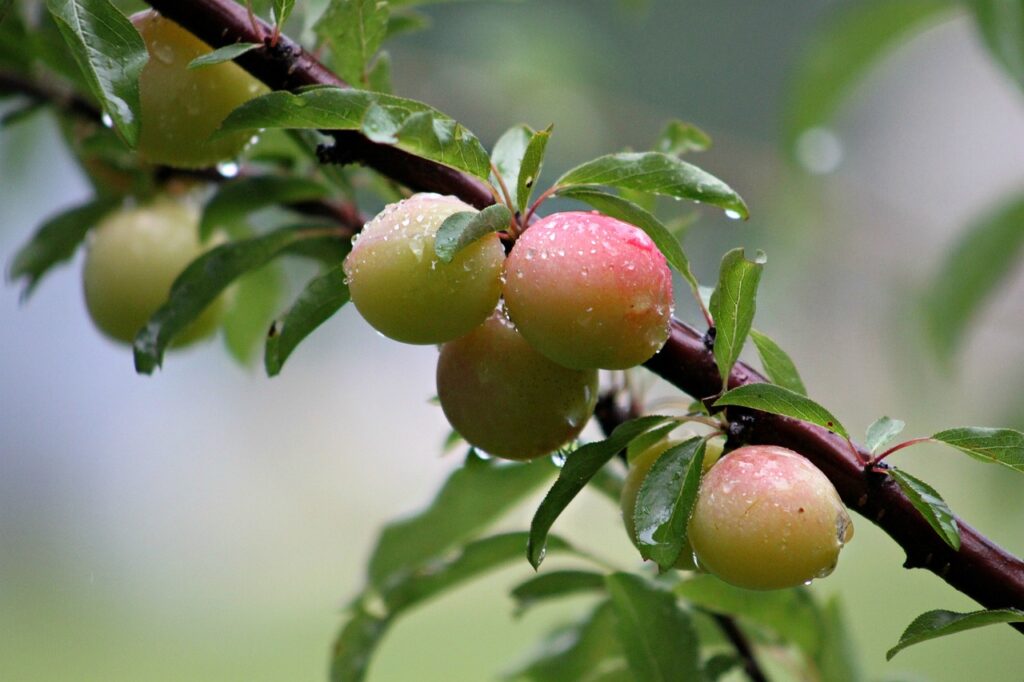
Wild Plums
Characterized by their tangy flavor and distinct purple color, wild plums grow on small trees or woody shrubs. These gems thrive in higher elevations and are highly sought after by both humans and local wildlife.
Colorado is home to several species of wild plums, each with its unique characteristics and flavors. The most common species you’ll encounter during your foraging adventures are the American plum (Prunus americana) and the Chickasaw plum (Prunus angustifolia). These plums typically grow in open woodlands, stream banks, and disturbed areas across the state. You may find them in irrigation ditches. They’re often spotted in the plains.
American wild plum trees are small deciduous trees or shrubs with a maximum height of about 15 feet. They have smooth grayish bark and branches adorned with sharp thorns. The leaves are oval-shaped with serrated edges and vibrant green coloration, turning yellow in the fall.
On the other hand, Chickasaw plum trees are generally shorter, reaching heights of about 10 feet. They have reddish-brown bark that peels in thin strips. The branches bear thorns, although they are less abundant than American plums. Chickasaw plum leaves are oblong with finely serrated edges and a glossy green color.
Colorado’s wild plum trees typically bloom in early spring, around April. In these early days, they will bloom with gorgeous white flowers. They bear fruit in late summer to early fall, usually from late August to early September. These wild plums may be purple, blue, or red in color.
To harvest wild plums, gently twist or pluck the ripe plums from the branches. Bringing a basket or container to collect the plums is a good idea, ensuring they have ample space to avoid crushing.
Once you’ve collected your bountiful harvest of wild plums, it’s time to savor the rewards. Wild plums are perfect for making delicious jams, jellies, pies, and sauces. Their sweet and tart flavor adds a delightful twist to a variety of dishes. If you prefer enjoying the plums fresh, rinse them thoroughly and enjoy. They make a great snack on the trail.
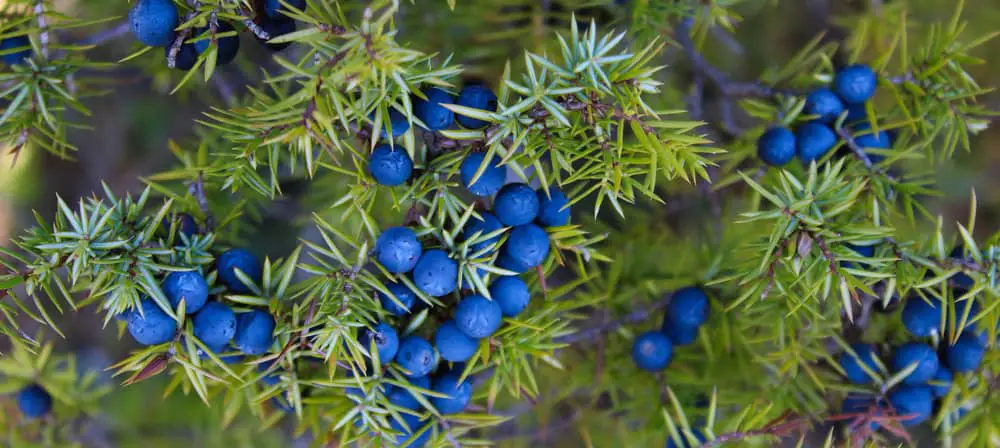
Juniper Berries
Nestled amidst the breathtaking landscapes of Colorado lies a hidden treasure waiting to be discovered: juniper berries. These berries are well known for their unique flavor profile and medicinal properties. They are also well known for the unique flavoring used to make gin.
Colorado boasts an abundance of juniper trees. Juniper trees thrive in various regions across the state, including the Front Range, the Western Slope, and the high-altitude plains. One popular spot for juniper berry foraging is in the foothills of the Rocky Mountains. You’ll find many different kinds of evergreen trees there, making them a place where juniper trees thrive.
The berries typically ripen in late summer and early autumn, offering a short window of opportunity for foragers. As autumn approaches, keep a keen eye out for clusters of small, purple berries.
Crushed or ground juniper berries can be used as a seasoning for meat. They have a delightful tanginess that makes for a unique treat. Infusing juniper berries in gin or creating juniper-based sauces can elevate your culinary creations with a unique twist.
Beyond their culinary prowess, juniper berries have long been revered for their medicinal properties. Native American tribes and early settlers utilized these berries for their diuretic, antiseptic, and anti-inflammatory qualities. From crafting herbal teas to incorporating them into tinctures and poultices, juniper berries have been known to aid digestion, soothe muscle aches, and support respiratory health.

Rose Hips
The vibrant red or orange fruits of the rose family, rose hips, are visually appealing and a powerhouse of vitamin C. These nutritious berries are found in various Colorado locations, including national forests and higher elevations. You’ll find them in the Rocky Mountains, high-altitude meadows, and riparian areas. Keep an eye out for wild rose bushes with their characteristic prickly stems and delicate pink or white flowers.
Rose hips are sometimes called rose berries. They can be enjoyed in the autumn months. Sometimes, they hang on well into the winter. Ensure you have the necessary tools, such as gloves and clippers, to harvest the rose hips carefully.
Rose hips are visually appealing and boast various health benefits and culinary possibilities. These tangy fruits are packed with immune-boosting vitamin C, powerful antioxidants, and other nutrients.
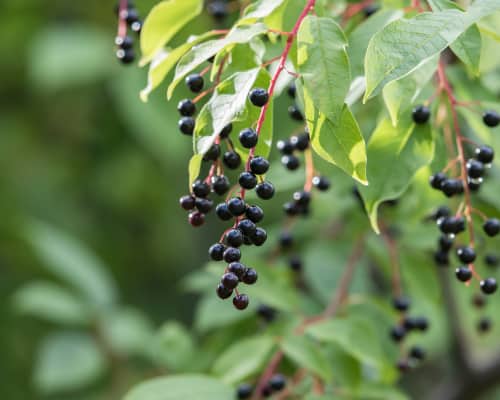
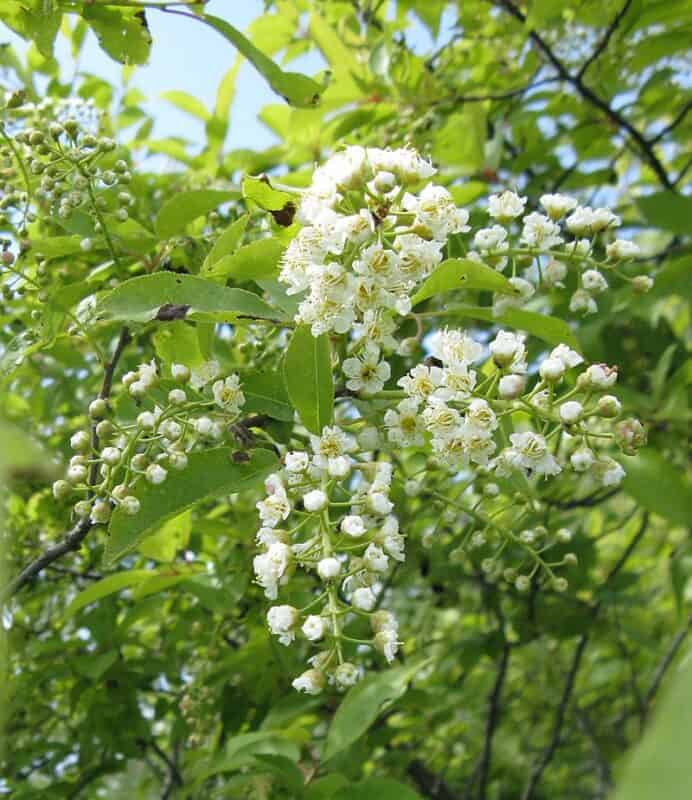
Chokecherries
Chokecherries are small and tart wild fruits. They are an abundant treat in Colorado. They grow in clusters, looking a lot like grapes. While the fruit of the chokecherry is edible, you do not want to swallow the seed.
Like with other cherries you may have eaten from the grocery store, the chokecherry pit contains cyanogenic glycoside, which can be toxic in large amounts. Do not swallow the chokecherry pit. Also, do not allow animals to eat the leaves, as it’s toxic to some animals.
With that warning out of the way, these wild fruits are often enjoyed in jams and pies. Some people enjoy eating them straight off the plant, but they are too tart for many people to eat them this way. One option is to sprinkle salt on the fruits, which sometimes cuts the bitterness. Another option is to alternate between chokecherry and sweeter fruit. If eating them straight from the branch is not for you, consider mixing them with other berries and sweeteners in a jam or pie.
Make sure that you pick the berries when they’re truly ripe. You want them to be a deep purple color, hanging heavy on the branch. Late summer to early fall is the optimal chokecherry season in Colorado.
In addition to their culinary appeal, chokecherries offer numerous health benefits. These berries are rich in antioxidants, vitamins, and minerals. Native American tribes have long revered chokecherries for their medicinal properties, utilizing them for their anti-inflammatory and antioxidant effects.
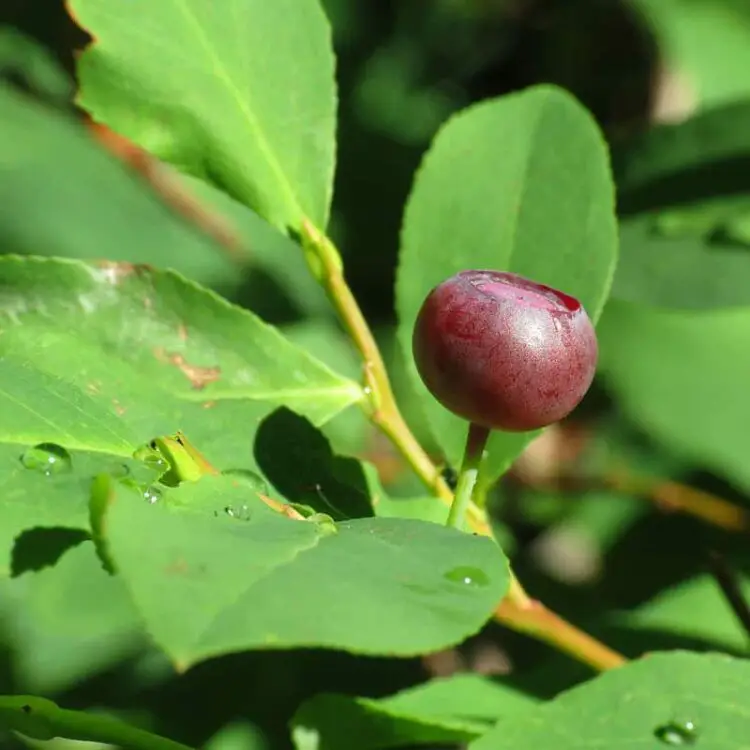
Wild Huckleberries
Huckleberries are one of those rare treats. They’re sweet and a little tart. The edible berries are high in vitamin C and antioxidants. They only really grow wild. Bears love to eat them, so there’s some fairly fierce competition for them. Huckleberries grow at higher elevations, so you must head into the mountains to find them. With so much competition for these berries, and with them only producing for a few weeks each summer, it’s common for people to keep their known huckleberry locations to themselves.
Huckleberries love acidic soils, so they tend to pop up after a wildfire has passed through.
Huckleberry plants are evergreen shrubs that can grow up to twelve feet tall. It likes to grow in moist areas, so near the lake is a great spot. You may also see it growing along roadsides. In the spring, the bushes show off pretty white flowers. These turn to ripe, dark blue berries in July.
These berries are enjoyed freshly picked on their own or can be made into ice cream, a pie, huckleberry butter, cake, or a glaze for a meat dish.
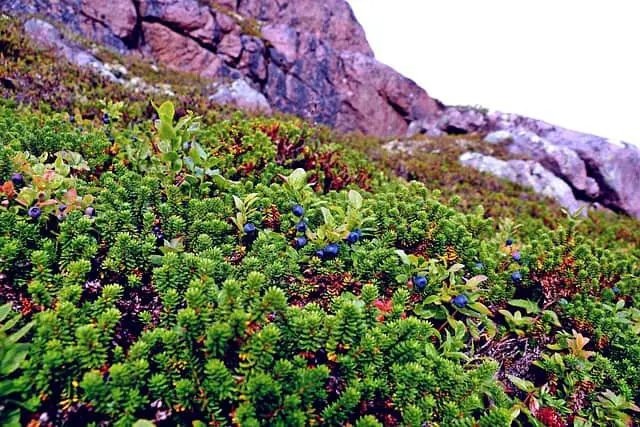
Wild Blueberries
Wild blueberries are a popular type of wild berry in Colorado. They are small and sweet and can be found in many parts of the state. Wild blueberries are often used in baking and cooking and are a favorite of wildlife, such as bears and birds.
These berries are very similar to the highbush variety when the berries are at their absolute best. Lowbush varieties tend to be more consistently sweet. They’re smaller than the highbush blueberries. Lowbush blueberries tend to be about the size of a pea. The lowbush plants are also smaller, growing closer to the ground. In fact, you could be standing in a field full of wild lowbush blueberries and not notice at first because the plant leaves are low to the ground and covering the berries themselves.
Wild blueberry plants may grow in dense forests, but they’re not going to be doing well, and the berries won’t taste great. You can find great wild blueberry bushes growing in large fields or along roadsides. They are often found in gravelly soils. They love sunny areas. Be aware that if the wild blueberries are growing along a roadside, they may be exposed to a lot of pollution from cars or get sprayed with herbicides to keep them away from the road, in which case they wouldn’t be safe to eat. It’s much better to seek these edible berries in large open fields.

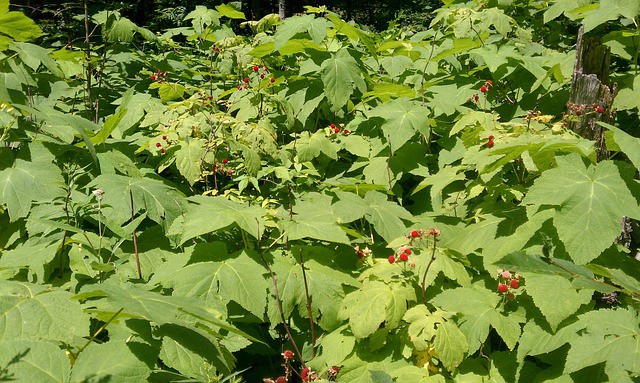
Wild Red Raspberries
Raspberries are sweet and juicy fruit that grows in various environments, including forests, wet meadows, and along riverbanks.
To find wild raspberries in Colorado, look for areas with plenty of sunlight and a good water source, such as near a stream or river. Raspberries are often found in patches, so watch for a cluster of bushes with ripe red berries.
It’s easy for berry pickers to be overly confident when identifying wild raspberries. Most people in North America have grown up eating raspberries purchased at the grocery store, so we feel like we know what a raspberry looks like. However, it’s good to always be careful. Raspberries have quite a few lookalikes, like thimbleberries or cloudberries. And while those two examples are edible, you still always want to know what you’re eating. Even if you’ve eaten raspberries from a grocery store before, make sure to use a field guide and practice identifying green leaves, looking at the stems, and examining the berries.
When you know you’re looking at a wild raspberry, you’ll want to pick them carefully. Raspberries are delicate and can be easily damaged, so use a gentle touch when plucking them from the bush. It’s also important to leave some berries behind for wildlife and to ensure that the plants will continue to produce fruit in the future.
Wild raspberries can be enjoyed fresh or used in various recipes, including jams, jellies, and baked goods.
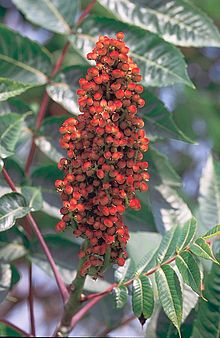

Smooth Sumac
Smooth Sumac (Rhus glabra), or Scarlet Sumac, is a deciduous shrub native to North America. It is a member of the Anacardiaceae family, including other well-known species such as poison ivy, poison oak, and mango. Smooth Sumac is a versatile plant that can grow in a variety of habitats, including dry uplands, rocky slopes, and open woods.
Smooth Sumac is known for its distinctive red, fuzzy fruit clusters that appear in late summer and fall. These clusters are a favorite food source for many birds and mammals, including deer, squirrels, and turkeys. The fruit has a tart taste. Inside the fruit is a large seed that can be chewed to alleviate thirst if thirsty and also be used to make a tangy, lemon-flavored drink that was popular among Native American tribes and early settlers. In addition to its culinary uses, smooth Sumac has a long history of medicinal and cultural significance. It has been used to treat various ailments, including diarrhea, sore throats, and skin irritations. It has also been used in traditional ceremonies and as a textile dye.
This plant is easily mistaken for the poison sumac, which has creamy white berries. So be sure and identify it correctly before eating.
Foraging Tips and Precautions in Colorado
While many wild berries are edible and delicious, it is crucial to exercise caution and properly identify the berries before eating them. Always use at least two sources when identifying wild edibles. In Colorado, you’ll want to look out for poisonous berries like red baneberry and red elderberry.
While foraging, you may also run into other wild foods or poisonous plants. For example, you can eat the fruit of the prickly pear cactus or find wild asparagus growing along roadsides. You may also find both edible and toxic wild mushrooms in this state.
While you’re out and about, be aware that some of the common poisonous plants you’ll find in Colorado include death camas, larkspur, and western water hemlock. It’s common to run into poison ivy, poison oak, and poison sumac across the state.
It can be helpful to learn to identify these poisonous plants before you learn to identify the ones you plan to consume. This way, you’ll be very familiar with any plant that gives you trouble.
Another good tip is to familiarize yourself with the habitats that support wild berry growth. Forested areas, meadows, and regions near water sources are often productive for finding wild berries.
And since we’re discussing anything that may take you off the beaten path in Colorado, we need to consider bear awareness. As you venture into Colorado’s wilderness in search of wild berries, you must be aware of black bears, which also have a fondness for berries. Practice bear safety measures, such as making noise, carrying bear spray, and securely storing food.
Foraging in Colorado
Foraging wild berries in Colorado offers outdoor enthusiasts a unique and rewarding experience. The state’s diverse ecosystems, ranging from the high country to the Front Range, provide ample opportunities to discover a plethora of edible and nutritious treats. Whether you stumble upon wild strawberries, wild plums, or rose hips, the bountiful wild berries will satiate your taste buds while boosting your immune system. So, gear up, head out into Colorado’s wilderness, and immerse yourself in the exciting world of foraging.
Recent Posts
The only venomous snakes in Washington State are Northern Pacific Rattlesnakes. The Northern Pacific Rattlesnake (Crotalus oreganus oreganus) is a sub-species of the Western Rattlesnake. Anyone...
Skunks are not classified as true hibernators. But they go into a state of torpor when the weather gets cold. Skunks are light sleep hibernators, along with opossums, bears, and raccoons. ...
